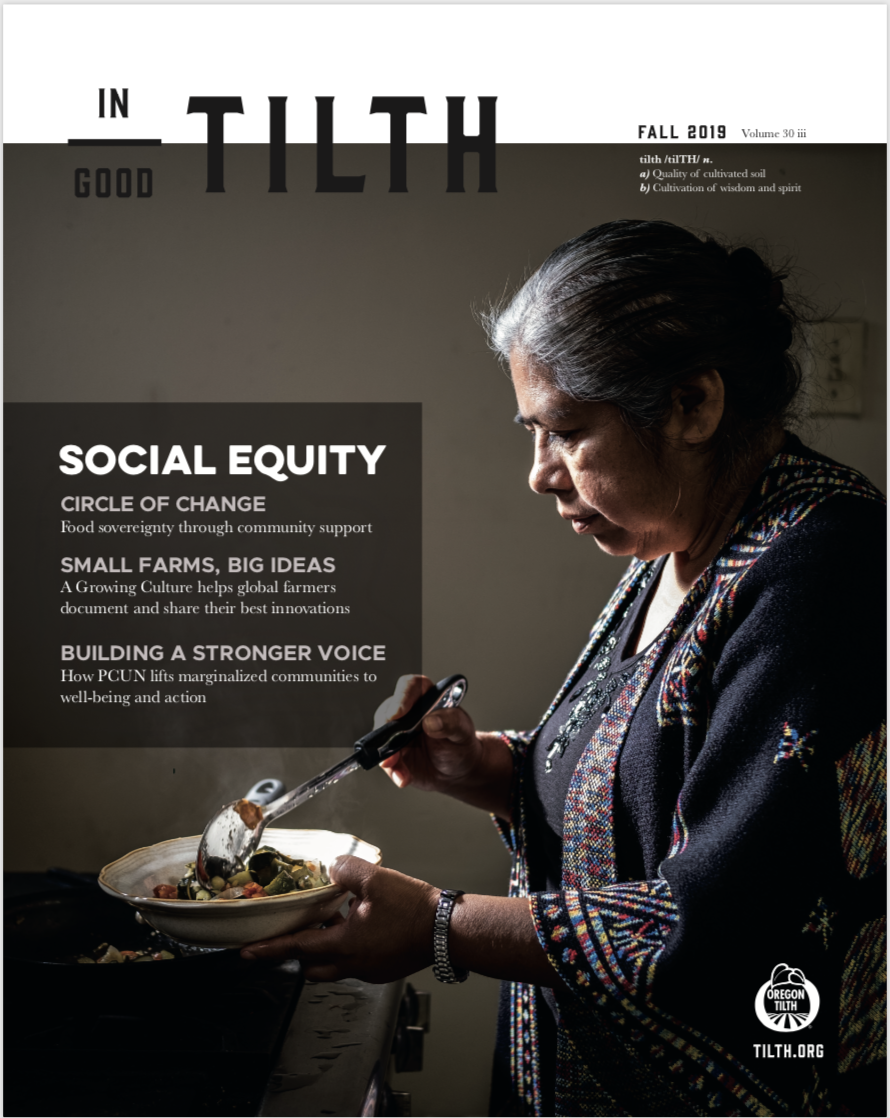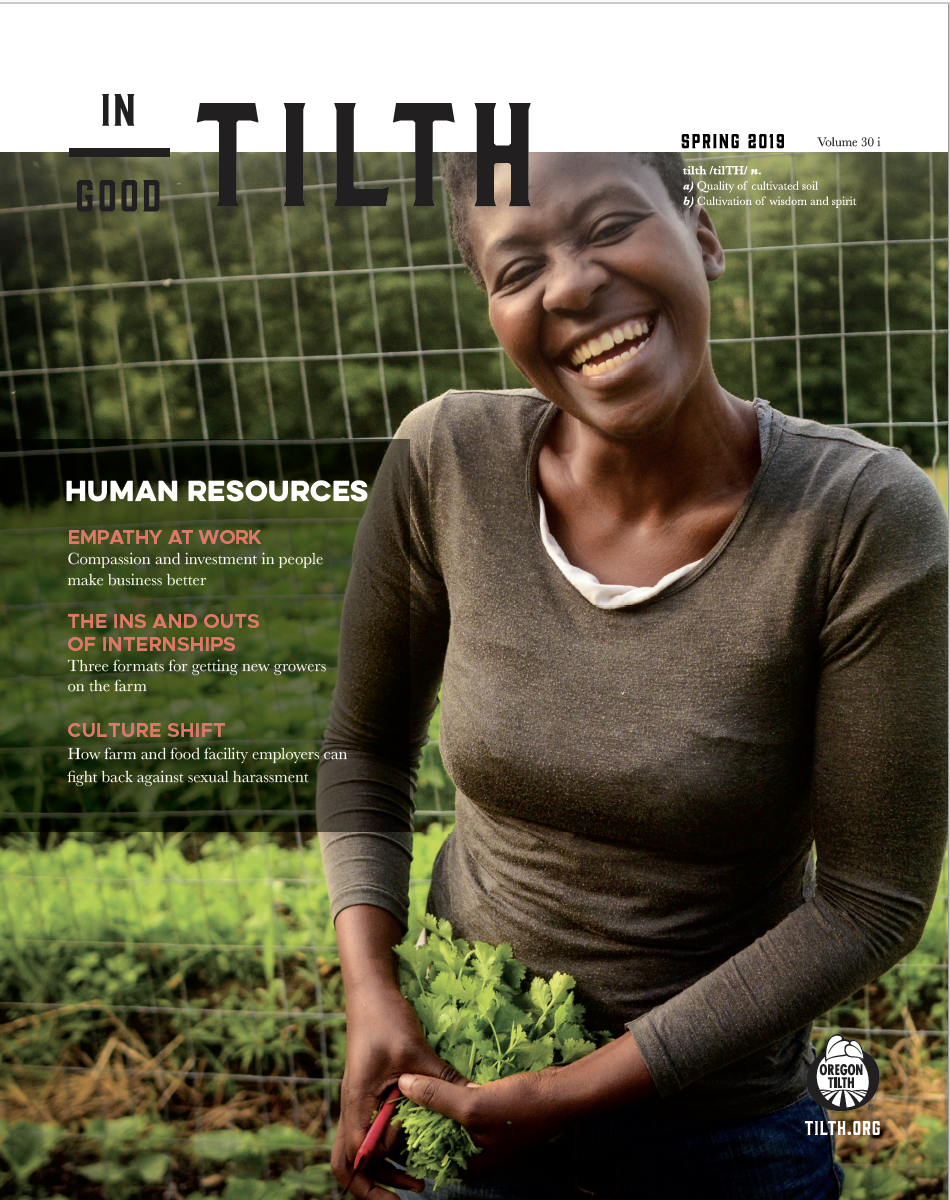In March 2016, Whole Foods will open a 38,000-square-foot store in downtown Eugene, OR., adding to a roster of 427 locations in the U.S, Canada and the UK. In most regions, a new Whole Foods Market is met with appreciation by consumers looking for the quality and variety that the store makes miraculously available. In Eugene, the retail giant enters a market already rife with organic options, populated by exacting and savvy consumers, many of whom are deeply loyal to their neighborhood specialty grocers.
These grocers keep close relationships with local farmers, the same farmers that Whole Foods representatives (called “foragers”) have been courting in anticipation of the 2016 opening. Given the sheer buying power of Whole Foods, some change in the local organics marketplace is inevitable. Whether the change strengthens or unravels the tightly bound community of growers and sellers in Oregon’s Willamette Valley remains to be seen, but the impacts underscore the seismic shifts in a marketplace driven more by the bigger stores.
Responsible labeling?
The Whole Foods Market opening will bring their “Responsibly Grown” branding program, where they label products “good,” “better,” or “best,” depending on how many checks the product has on internally developed lists reflecting the company’s definition of responsibility and sustainability. According to Denise Breyley, Whole Foods Market forager in the Pacific Northwest, if you see a product on the shelves at their stores, it means that it has met both the company’s internal standards as well as those of independent certifiers.
“The first thing is that everything has to meet Whole Foods Market standards,” Breyley says. “That applies to every product starting with produce all the way to the ingredients we use to prepare food and bake in our bakery. Number two is for us to identify products as having special attributes, like being organic or being non-GMO or meeting our animal-welfare standards. All of these things have to be verified by independent third parties. So if your product is organic, it has to be certified. If it’s non-GMO, it has to be certified. If you claim it’s gluten-free, it has to have the gluten-free certification on it.”
That’s pretty clear, and in line with the company’s often-professed ethic of transparency.
Mark Kastel, who helms the Cornucopia Institute, an organic industry watchdog, applauds Whole Foods transparency but takes umbrage with the rating system, which he thinks is, “Downgrading organics as gold standard in the marketplace.”
By the company’s devaluing organic certification per se, Kastel feels that consumers who are swayed by the rating system could be steered toward products grown under less-than-optimal conditions. “A consumer could walk in to Whole Foods, somebody with trust in the company and see some conventional produce marked as the best which could be sprayed with toxic agrochemicals, or grown with synthetic soil. There might be post-harvest sprays with mold and sprout inhibitors, shellacs or waxes that would not be safe and acceptable in organics.”

They give points for someone putting a solar panel on their shed,” Kastel continues. “Organic should be the floor. Then, if they want to reward farmers with higher ratings that go beyond organic, that would be great, and not rate conventional produce at all. They don’t use organic certification as the entry point.”
While Kastel posits that Whole Foods’ in-house labeling as being something of an antagonist to the robustness of organic certification in the marketplace — and the viability of small-scale organic farming, Whole Foods’ Breyley, who has been with the company for more than 20 years, presents Whole Foods as a champion and partner of the organic community.
“We have a 35-year commitment to helping to support and develop organic products in the marketplace,” Breyley says. “For many growers or producers of products, Whole Foods was the first place that their products were sold. We’ve always been a great partner with organic producers of all kinds to provide them a marketplace to sell their products.”
The Responsibly Grown program indeed includes organic certification as only one of a number of factors taken into consideration, which Breyley sees as a necessary corrective in the marketplace that will help consumers determine in much greater detail the growing practices behind a product.
“I want our customers to know and appreciate what a farmer does to grow a great crop,” Breyley says. “Obviously organic agriculture is something we’ve been committed to for a long time. We also wanted to be able to give people visibility into what other producers are doing as well in terms of their growing systems. Conserving water is a big topic of conversation in the Northwest, so farmers who are doing great things in terms of water usage and conservation, we want to be able to highlight that to our customers too. That’s one of the pieces that farmers are evaluated on under the Responsibly Grown rating system. There isn’t really any transparency around where you’re just looking at organic and non-organic.”
California Certified Organic Farmers (CCOF) has been active in initiating dialogue between Whole Foods Market executives and a group of organic farmers who raised concerns with the Responsibly Grown rating system. Farmers have also been vocal. “Whole Foods has done so much to help educate consumers about the advantages of eating an organic diet,” five farmers wrote in a letter sent to John Mackey, co-founder and co-chief executive of Whole Foods in June, 2015. “This new rating program undermines, to a great degree, that effort,” reported the New York Times.
Rating changes
In response, a list of proposed adjustments from Whole Foods vice president of procurement – perishables Edmund LaMacchia released on a CCOF blog stated that, “Certified organic produce and flowers will be granted a minimum rating of ‘Good’ until January first, 2016. No certified organic produce will be labeled as ‘Unrated.’ Whole Foods Market will adjust in-store signage to clearly label non-organic produce and floral items as ‘Conventional,’ and that by October first, new rating stickers will be delivered to all stores.”
LaMacchia goes on to state that, “We also met with a group of CCOF growers to discuss adjustments to the current scoring system,” and that, “certified organic products will be further recognized with additional points.” He went on to outline additional initiatives including increased supplier training through regional grower meetings, and evaluation and improvement of Responsibly Grown through multi-stakeholder input. “We are revising the Responsibly Grown rating system and plan to eliminate the ‘Good,’ ‘Better,’ ‘Best’ nomenclature. Replacing the rating system taxonomy is a top priority…[with] the goal of having a replacement rating system operational by May 2016.”
In addition to heat from its suppliers and grassroots advocates, Whole Foods has been reacting to its customers and shareholders. The Associated Press reported on September 28, 2015 that Whole Foods was cutting 1,500 jobs over eight weeks as it looks to lower prices and keep up with competition.
While Whole Foods is a big player in the sustainable agriculture marketplace, it is only one of many major retailers seeking a piece of organics profits. What began as a community of cooperatives and small farmers has turned into a $39 billion mainstreamed industry, with conventional grocery stores selling at least half of the organic products. “USDA Organic” banners ripple above bins of produce at Fred Meyer. Trader Joe’s presents its private label products as reflecting sustainable agriculture practices. Rachel Broderick, a company spokesperson for Trader Joe’s, says, “All of our private label organic products are, in fact, certified organic by accredited certifying agencies, per USDA National Organics Program standards.” Safeway has its O series, a private organic label. You can get organic products and produce at Costco.
A suspicion of corporate entities is rife in the organic community, which came into its own as a kind of cooperative subculture of producers and distributors. “Mike,” the manager of a CSA farm in the McKenzie River Valley (who wished to remain anonymous) opined that, “The term organic has been coopted, natural has been coopted, stewardship has been coopted, sustainability has been coopted, restoration has been coopted.”
Local impacts
Eugene has a number of specialty grocery stores that are looking with interest at the impending arrival of Whole Foods. At this point they coexist nicely with the major retailers in town. Even though Whole Foods would seem to appeal to their customer base, they are comforted by a sense of fierce loyalty. They are to a large extent neighborhood grocery stores, serving a stable customer base that they often know by name.
At Capella Market, produce manager Claudia Wolter seems unfazed by it all. She says that the relationships she has developed with growers are strong, as are the store’s relationships with its customers. She sees Capella’s competition as being with the larger Market of Choice, and that Whole Foods will therefore likely compete with Market of Choice, leaving smaller specialty neighborhood organic markets like Capella insulated. Wolter says that Whole Foods’ rating system might only confuse consumers already faced with a bevy of organic-certifying bodies and choices.
“It’s much better if labeling is universal,” she says. “It makes it easier for everyone involved.”
Wolter, who has worked at the market for nearly three decades, through three incarnations, including one as a Wild Oats, has observed organics rise in popularity with some bemusement. “I’ve seen a lot of changes and a lot of growth in the industry,” she says. “Every store is trying to get its fingers in the organics pie because that’s the new thing where they can make money. Whether they really care about that or not is another thing. They’ll use whatever buzzwords are out there, whether it’s ‘gluten-free’ or ‘cruelty-free.’ What those things mean to every business is something different.”
Market view
On Saturday afternoons in Eugene, the farmers’ market, a stone’s throw from the new Whole Foods location, teems with activity. Growers and buyers greet each other with something bordering on elation. What does the growing presence of major retailers in the organic marketplace mean for these small farmers and for those who buy from them? A 2013 study in the International Journal of Retailing & Rural Business Perspectives looking at organic farming determined that, “For small-scale organic horticulture and processed- food producers, it is imperative that the local market is sustained for their existence to be secure.” Is that local market being threatened?
Justin Moran mans the booth for Ruby and Amber’s Organic Oasis at the Saturday market. He was sanguine when asked about the impact of the major retailers.

“You can go into Safeway or any other major retailer, and you can get a pound box of organic mixed salad green and it’s really cheap,” he acknowledged. “Some of the farms are producing it at that scale to get it to a price point that’s acceptable to a grocery store customer. Those aren’t practices that a small-scale farm like us can really comprehend. We don’t have that sort of mechanization or scale, so we can’t compete on price with that kind of product, but then again we grow a very different product. ”
He said that he feels comfortable with selling at the market and directly to restaurants, and that if Whole Foods came calling, he would probably decline.
“We would rather sell to a local chain than a national chain like Whole Foods,” he says. “I want to support local business over a national chain or international chain.”
Time will tell if Whole Foods intent is to differentiate itself from the rest of the marketplace at any cost, or if it is taking the reins of sustainability and redefining its parameters in a way that others will follow. The company is the first to put into place a plan of labeling all of its products GMO or non-GMO, by 2018. In all events, Whole Foods and the other major retailers are here to stay. It’s not necessarily a bad thing, as even Mark Kastel acknowledges: “If these companies lend their logistical marketing prowess and economy of scale to organic food, making it more available to consumers, that’s a good thing,” he says. “If they lend an added level of efficiency, they are going to put competitive pressure on other retailers and distributors, and we’re going to see margins coming down and prices coming down. As long as that doesn’t effect the farmer and quality of food, both farmers and consumers would win.”



















